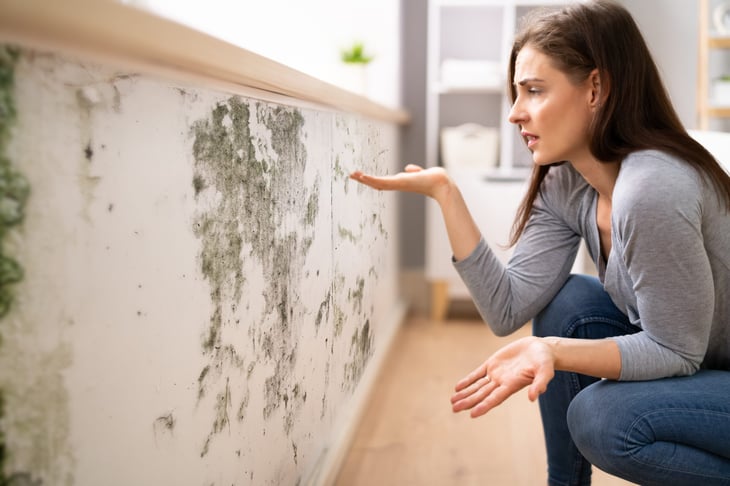
Moldy environments can cause or exacerbate allergy and flu-like symptoms and asthma. Mold in the home also increases the risk for infection for people who have immune suppression.
Molds are common in homes, growing in high humidity and places with moisture such as around leaky pipes or roofs. Mold can even grow on paper products or furniture fabric and many other places, according to the Centers for Disease Control (CDC).
You can also bring outdoor mold spores into your home on your shoes, clothing and even your pets. In the right moisture and humidity conditions, mold spores grow and multiply, affecting the air quality in your home.
Some places where mold can grow are obvious, such as bathrooms and damp basements. But mold can grow in places you never thought to look, too. Read on for hidden places mold grows in your home.
HVAC system
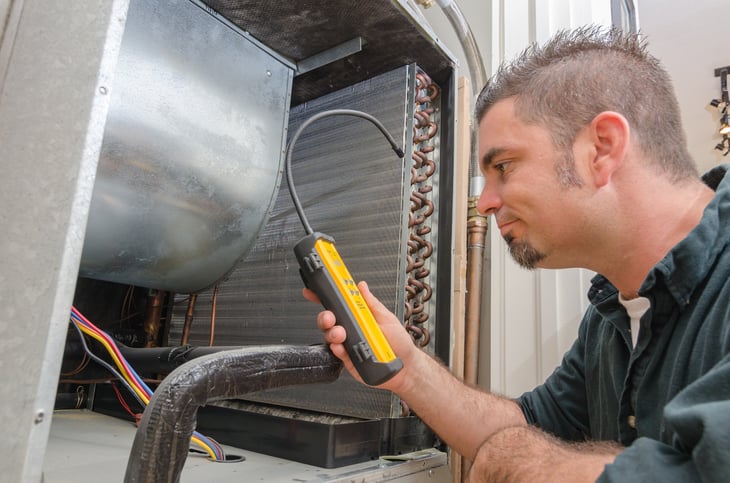
Mold can thrive in your home’s HVAC system, blowing mold spores and fragments through air ducts throughout the home and into the air you breathe. Signs of possible mold in the air and other parts of the home include people in the home experiencing coughing, sneezing, eye irritation, sore throat or a runny nose from being allergic, according to the National Institute of Environmental Health Services (NIEHS).
“There may be musty odors coming from vents and visible signs of mold growth on vents and duct work,” says Brad Roberson, president of Aire Serv, a nationwide heating and air conditioning repair service. “Most organic growth and mold will have black, blue, green, or yellow coloring.”
If you suspect mold growth in the HVAC system, Roberson recommends hiring an indoor air quality or HVAC professional to measure indoor humidity levels and recommend products or services to create safe and comfortable humidity levels.
To keep mold from growing in the HVAC system, have the furnace and air conditioner unit inspected annually and the duct system evaluated by an HVAC professional every three to five years to see if it needs cleaning, says Roberson.
You can remove small spots of mold growth in the HVAC system with household cleaning products, says the NIEHS. For major areas of mold growth, the NIEHS recommends consulting mold removal professionals.
Behind drywall and baseboards
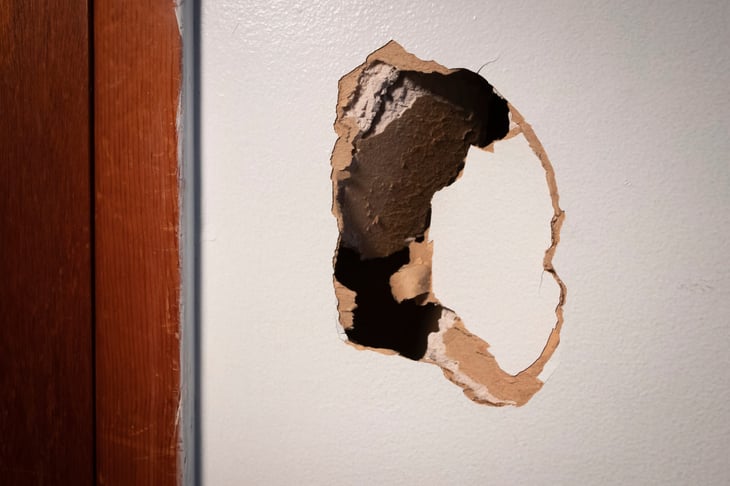
Mold could be spreading behind the drywall in your home, and you might not even know it. The paper on both sides of the drywall is a common source for mold growth, says Tim Fagan, a mold remediation expert and president of 1-800 WATER DAMAGE, a national water mitigation and mold remediation company headquartered in Ann Arbor, Michigan.
“If you can see mold growing on its face, it’s usually 8 to 10 times larger on the surface area on the other side,” says Fagan. Mold on drywall needs moisture and warm temperatures to grow. Often, a leaky pipe, condensation dripping from pipes or a roof leak is the cause, he says.
Mold can also be caused when water gets sucked up from a wet floor and absorbed into the wall and behind baseboards, says Fagan. To stop mold growth behind drywall, you must first locate the water source causing moisture.
You can buy meters at the hardware store to detect moisture and the humidity level behind drywall. If you suspect mold growth behind drywall but can’t locate the water source, contact an indoor environmental professional (IEP) who can find the water source and safely remove the mold.
Upholstery
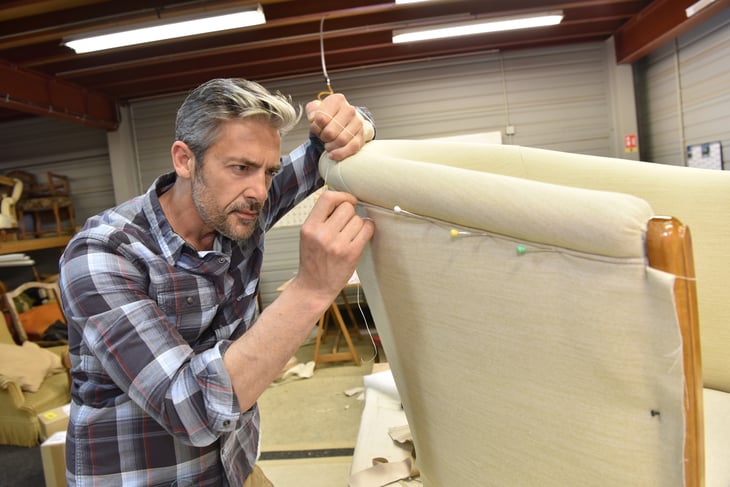
If you live in a hot and humid climate or don’t have proper humidity control in your home, your sofa, chairs and other upholstered furniture could be a breeding ground for hidden mold, says Michael Rubino, a certified mold remediation specialist, air quality expert and founder of HomeCleanse, a national mold remediation and household air quality service company.
“If you have high humidity for days on end, you’ll start to see mold growing on upholstery, says Rubino, who adds that upholstery mold may not be easily spotted because molds that grow in high humidity are typically white, not black. “Unless you have a bright colored fabric where it might not blend in. Once mold takes hold, its roots penetrate deep into the fibers of the surface.”
Disposing of the contaminated furniture is the most effective way to handle the mold situation, since porous items like upholstery are difficult to decontaminate completely, says Rubino.
If you wish to keep the furniture item, he recommends wearing an N95 face mask and latex gloves. Thoroughly vacuum the surface with a HEPA (high-efficiency particulate air) vacuum, which can capture tiny mold particulates. Next, spray the upholstery with a botanical cleaning product, letting it soak in per the product’s instructions. Wipe clean and repeat the process two more times, using the clean side of a microfiber towel. Make sure the surface dries completely.
To resolve high humidity levels in your home that led to mold, place a dehumidifier in the room or consult an HVAC technician for adjustments. Inspect regularly to make sure mold on upholstery (and in the entire room) doesn’t return.
Attic
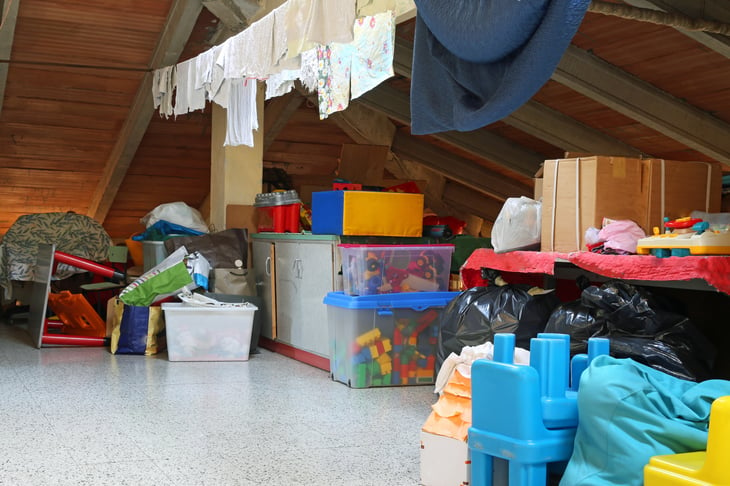
Moisture, high heat and humidity in the attic are the perfect combination for mold growth, says Josh Story, a home inspector and owner of WIN Home Inspection in Destin, Florida. Water in the attic can come from a few sources, including leaky pipes, roof leaks and HVAC duct work. “If there’s a leak in your air conditioning duct work that allows cooler air to escape into the hot attic, that creates condensation,” explains Story. “Over time, that condensation can contribute to microbial growth and mold.”
Since a home inspection is noninvasive, Story can’t cut into the walls or ceiling to find the water source, he says. But locating the leak is crucial to preventing future mold growth in the attic. “In those cases where we can’t see where it’s coming from, we recommend further evaluation from a contractor who can remove whatever needs removed to locate the source of that moisture.”
Clothing

In high humidity climates or homes where the humidity level is above 50%, mold can grow on clothes in your closet or even a hat you might hang beside a door.
When clothes in the closet are packed tight, the lack of air circulation combined with high humidity can grow mold on clothes fast, says Story. “Mold on clothes usually starts off as a mildew appearance like green speckles or almost a dusty appearance sometimes,” explains Story.
Story looks for mold on the closet walls, ceiling, floor and any corners, while spreading clothing apart to look at the fabric and the wall behind it. You can clean mold from closet walls, floors and the ceiling with soap and water or a household cleaner, particularly one that’s designed for mold removal, according to the Centers for Disease Control (CDC).
You can remove mold spores from clothing by scraping off the mold with a stiff-bristled brush, soaking them (not in the washer) in 1 cup of white vinegar in a large container or bathtub for an hour then washing them in hot water using a high-efficiency detergent and drying them outside in the sunlight to kill off any remaining mold spores, according to AdvantaClean, a mold removal and water damage restoration company in Fort Lauderdale, Florida. Even so, washing may not get rid of all mold spores on clothing, according to the company.
Washing machine

When you toss clothes in the washer, you may not think to look for mold in the tub, detergent, bleach and softener dispensers or door seal. But moisture and humidity, along with accumulated residue, make washing machines a “hotbed” for mold growth, according to GE Appliances. Mold under the rubber seal that goes around the door likely isn’t visible on the surface. When you look under the seal, however, you may be shocked at the mold growth you find.
Front-loading washing machines are the most vulnerable to mold under the seal, says Rubino. “If you have a front-load washing machine and you open the door, you’ll see a rubber gasket around the door entrance. If you pull the gasket back a little bit, you’ll be crazy surprised at what you find.” Mold in the washer can get on your clothes, making them smell funky. When you wear the clothes, mold can also get on your skin. You could also be inhaling mold spores on your clothes.
Fortunately, it’s easy to remove mold from your washer with soap and water, using a microfiber towel to capture the particles as you wipe mold away. Or you can use a disinfectant designed for mold removal such as Benefect, says Rubino.
Coffeemaker

How about a moldy cup of coffee to kick-start the day? That’s what you could be drinking each morning if you’re not cleaning your coffee machine, especially the water gaskets, says Rubino.
“Because these rubber gaskets exist to stop and start the flow of water, they can trap moisture,” explains Rubino. If your coffee machine isn’t cleaned well to remove growing mold on the gaskets, it will accumulate and get into your coffee, he says.
Removing mold from a coffee machine requires disassembling the parts, soaking them in a 1:1 ratio of vinegar and water solution and spraying inside parts, says Rubino. Wash all parts with soap and water, and let them air dry completely.
Add a 1:1 vinegar and water solution to the water container, start the cycle and turn off midway for 30 minutes, restarting to remove all the vinegar. Then run clean water for several cycles. If you’re not up to taking out and putting back intricate parts and tubing, you have another option, too.
“When mold is discovered, the best option is to get rid of the coffee machine and opt for a new one,” suggests Rubino. “The particles, including spores, fragments, and potentially toxins released by the growth have swished all around the machine and are stuck to the surfaces inside. Mycotoxins and bacteria, in particular, can be difficult to remove. If any are left behind, mold exposure will continue.”
Wooden cutting board
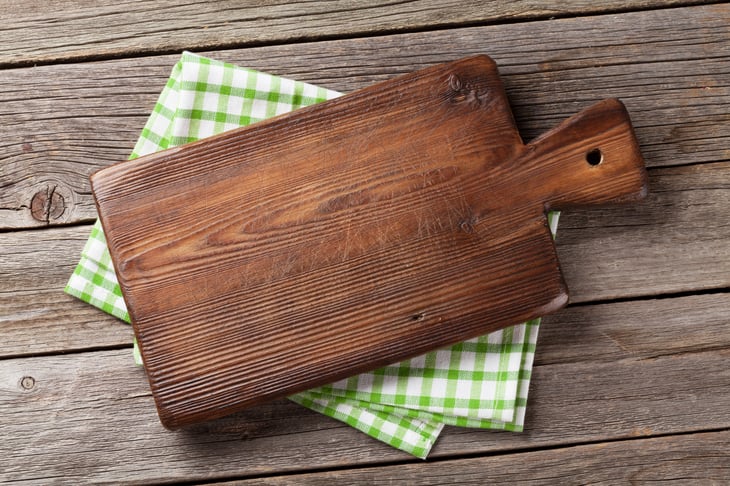
If you rinse off your cutting board and stick it in a drawer wet or have a big cutting board on the counter that you don’t clean well or dry properly, you could be serving up a portion of mold in your next meal.
“If you don’t clean the cutting board thoroughly or let it dry, mold spores already in our air to some extent can land on the surface and start to grow over time,” says Rubino.
To clean and dry wooden cutting boards, the U.S. Department of Agriculture recommends washing the board with hot, soapy water, rinsing and sanitizing with 1 tablespoon of chlorine bleach per gallon of water, air drying or patting the board with paper towels.
In addition to properly cleaning and drying cutting boards to prevent mold, Rubino recommends applying a food-grade cutting board wax to seal the wood.
Dishwasher

The inside of your dishwasher and behind it are breeding grounds for mold, says Rubino. “You should regularly inspect any sort of appliance that connects to water sources,” says Rubino. “They can get nasty leaks that happen over time and people don’t realize it right away.”
Like with a washing machine, mold can grow under the seal that wraps around the inside of the door. You can slide the dishwasher out and look behind and beneath it for mold growth or call a plumber to check everything out, including leaks.
To clean mold from a dishwasher, use the same 1:1 vinegar/water ratio to soak and wipe all removable parts with a microfiber cloth. Run a normal wash and rinse cycle with soap and warm and then wipe the interior with a microfiber cloth. Run another cycle to get rid of any remaining vinegar. When finished, leave the dishwasher door open to dry.





Add a Comment
Our Policy: We welcome relevant and respectful comments in order to foster healthy and informative discussions. All other comments may be removed. Comments with links are automatically held for moderation.